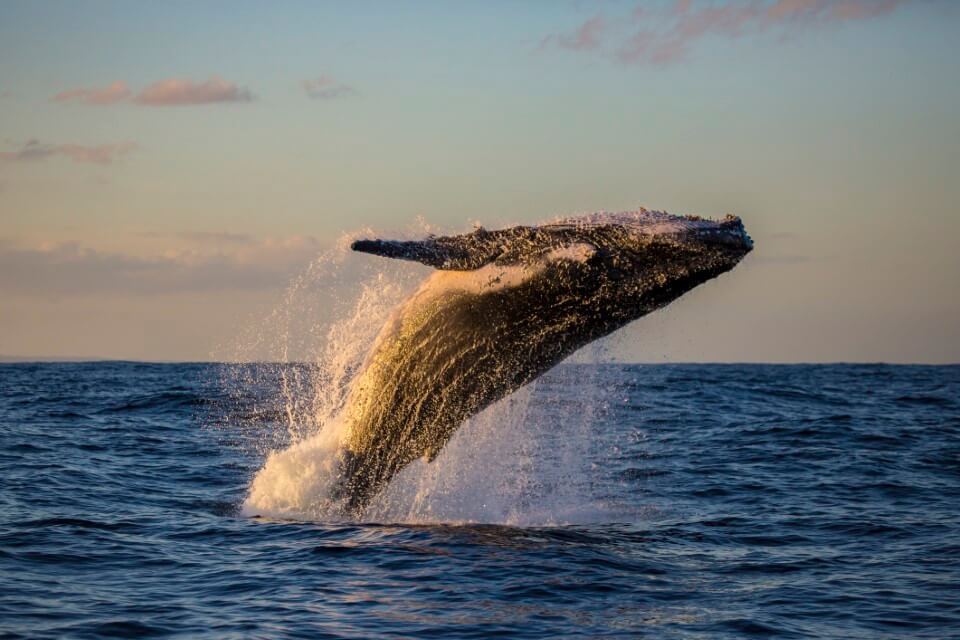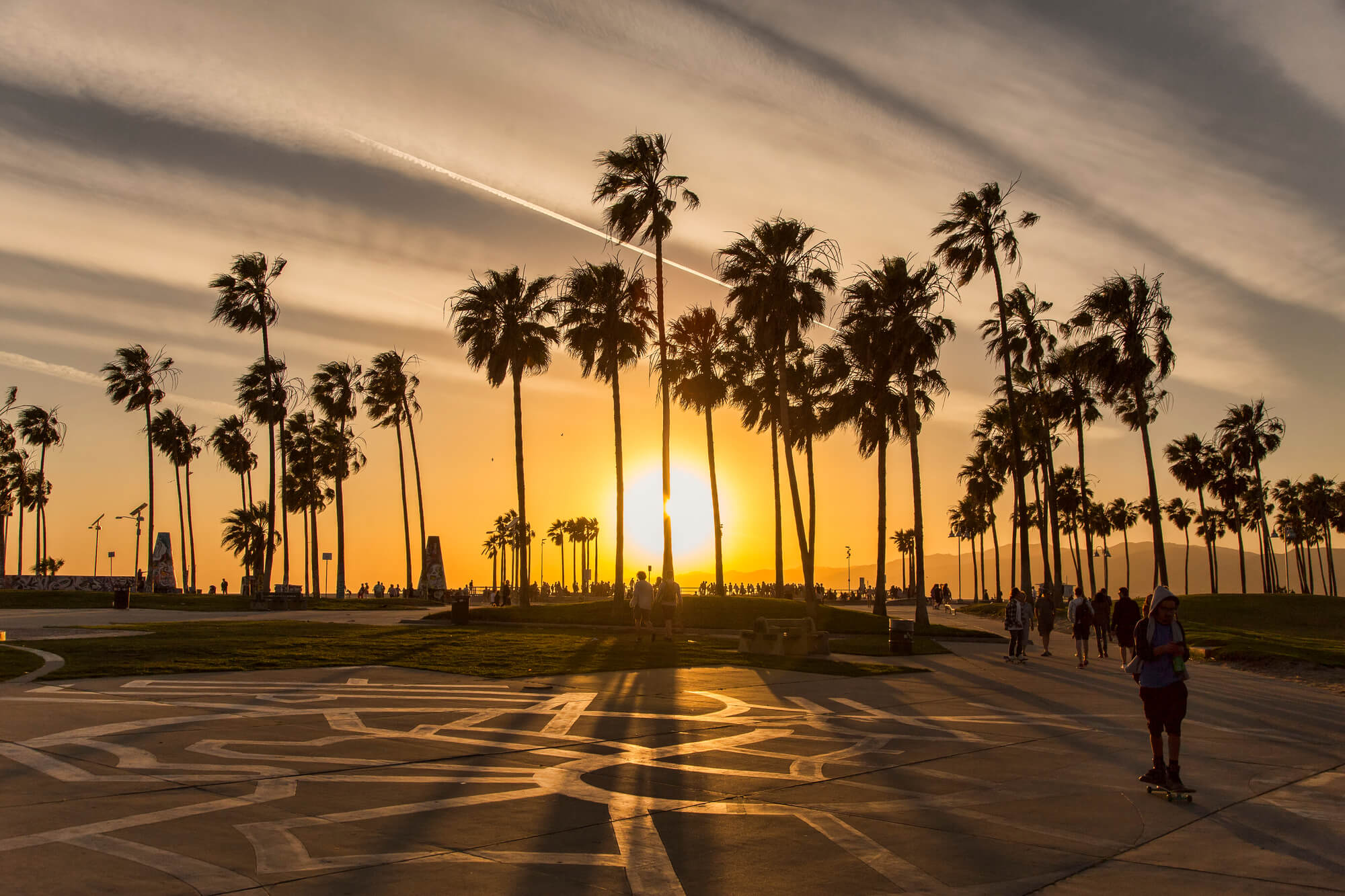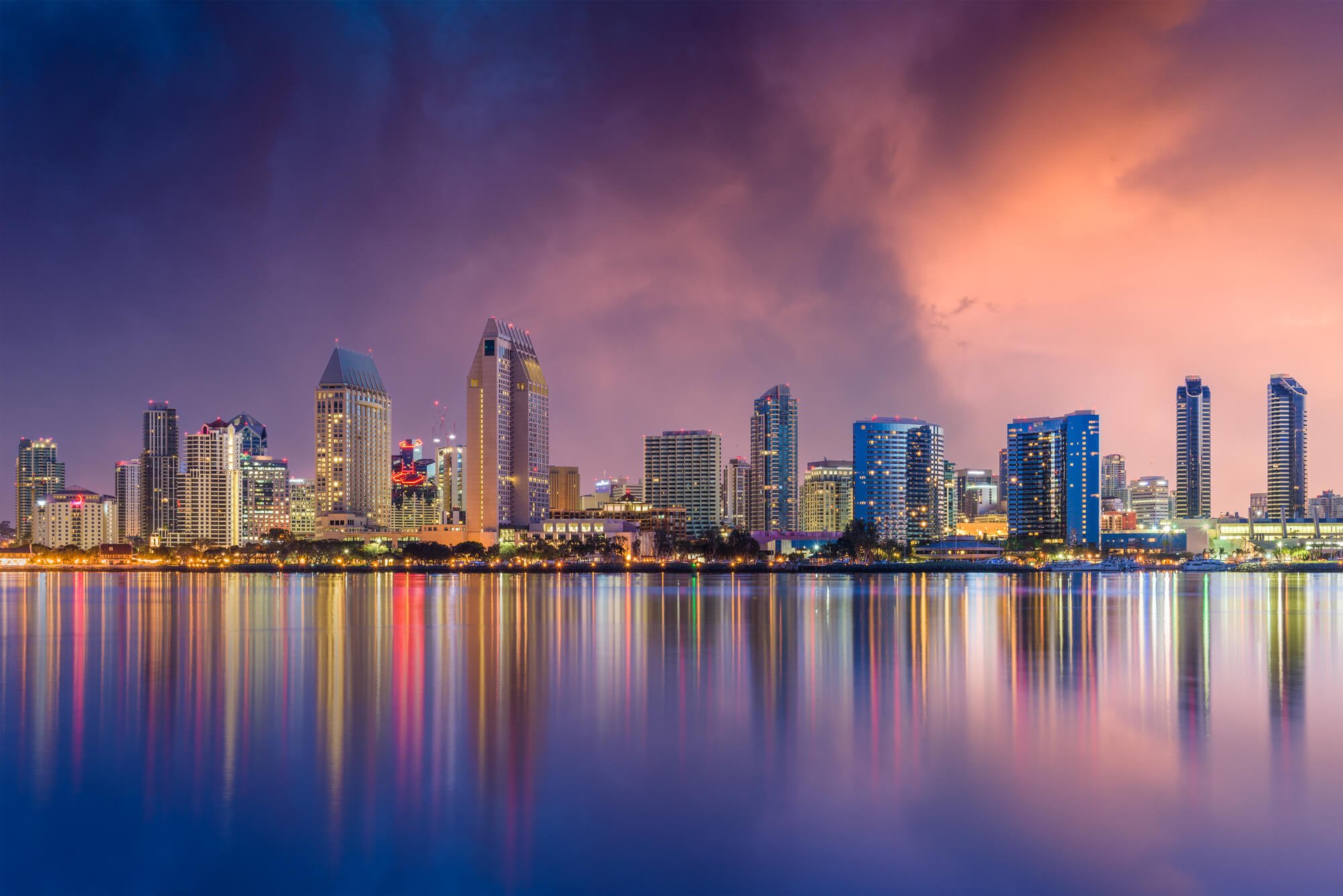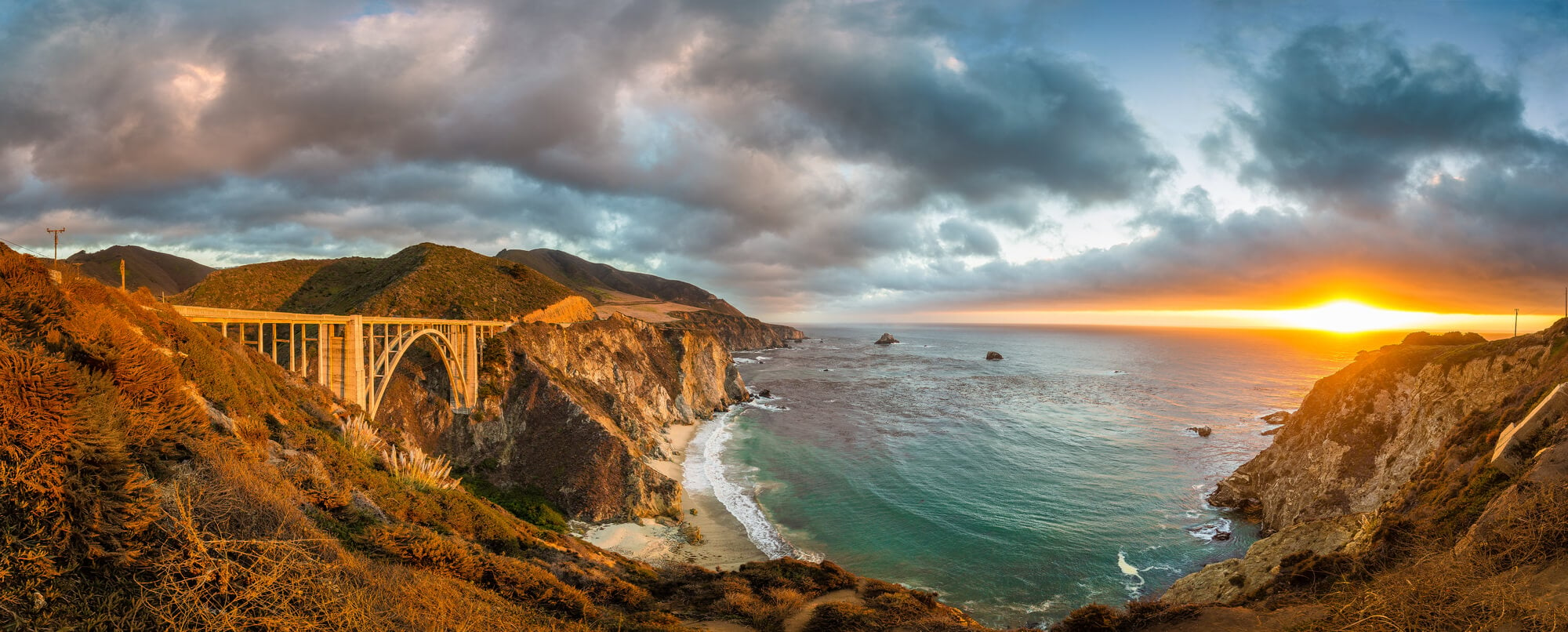There is nothing quite as magical as seeing one of the Earth’s most magnificent animals frolicking freely in its natural habitat. Seeing wild whales is a vacation memory that lasts a lifetime, and this awe-inspiring, emotionally-moving experience has grown in popularity over past decades, particularly as light has been shone on the unethical practice of keeping whales in captivity. There are many places around the globe where you can responsibly and considerately see whales in the wild, including Mexico, The Azores, and Iceland. For this article, we’re going to be looking at whale watching in California, which is undoubtedly one of the best places in America to see cetaceans in the wild.
What types of whales live in California?
There are numerous beautiful whale species living off the coast of California. Types of whales that you might tick off your list in California are:
Gray whales
The species most often seen off of the California coast, gray whales are large, majestic animals. Their name comes from the patchy gray color of their skin. You’re most likely to spot their tail flukes as they dive. You may also see them at the surface of the water as they come up for breath. Gray whales pass California as part of their great migration between Alaska and Mexico, so you might be lucky to see them traveling in large pods.
Blue whales
The largest animal on Earth is also one of its greatest honors to see in the wild. Blue whales feed on krill and swim near the surface in order to gobble up as many of the tiny organisms as they can. Feeding time is your best chance of seeing them, as up to ¾ of their backs are visible, above the surface. You might also see their beautiful tail flukes as they dive beneath the waves. Blue whales usually stay further out to sea, so it’s unlikely that you’ll spot them from the shore.
Fin whales
Another giant of the ocean, fin whales are the second-largest behind the mighty blue whale. They are one of the harder whales to spot because they swim pretty fast. They can hold their breath for as long as 45 minutes, meaning that they come to the surface infrequently. If you’re in the right place at the right time, you might see a back or a waterspout as a fin whale takes a breather, but you are very unlikely to see a tail fluke.
Humpback whales
This is one of the most commonly sighted species of whale worldwide. With its distinctive nobbly head and long pectoral fins, the humpback whale is easily one of the most recognizable as well. Humpbacks are known for spectacular displays. They frequently breach their whole bodies out of the water, making them a favorite with whale watchers.
Minke whales
Minkes are a distinctive species of baleen whale, meaning that they have the grill-like structure in their mouths to filter food through. Minke whales are recognizable for their sleek bodies and pointed backfin. Their colors are also unusual, ranging from black to gray and even purple. They also have white bands on their pectoral fins. They can stay under the water for around 20 minutes. Minkes are one of the smallest of California’s baleen whales, and also one of the rarer sightings.
Orcas
For so long the poster-child of captive whale shows, the magnificent orca is a stunning species that is far more rewarding to see wild and free than trapped behind glass. Orcas (sometimes known as killer whales) are actually imposters on this list because they are not really whales. Instead, they are a member of the dolphin family, of which it is the largest species. They are instantly identifiable from their long, protruding black dorsal fins, sleek dark bodies, and white spots over their eyes. Orcas are highly intelligent, and can usually be seen hunting in vast pods, moving quickly and elegantly through the water, clicking and squeaking to each other as they enjoy the thrill of the hunt. They are much more fearsome than other cetacean species in California, and feast on sea lions, dolphins, and even larger whales.
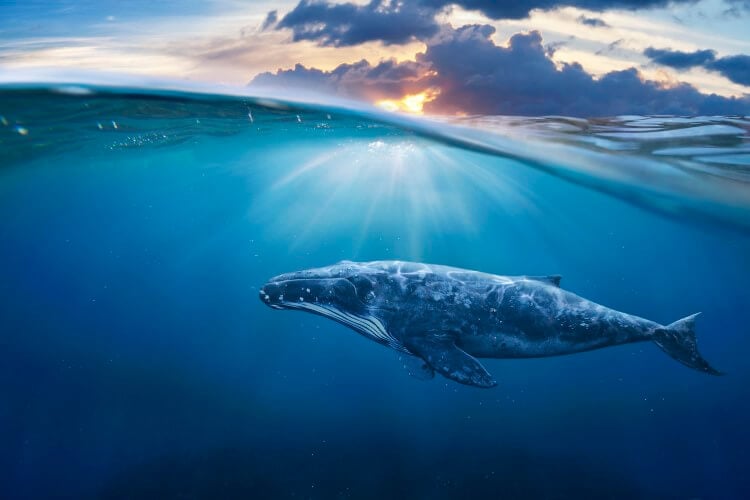
When is whale watching season in California?
One of the biggest joys of wildlife spotting is that there is always an element of unpredictability and surprise, and whale watching is no exception. The Pacific coast of California is a highway for migrating animals, so whales do follow a seasonal pattern, making your chances of seeing them higher if you go during the migratory periods. That being said, different species of whales are present at different times, so if you want to try and spot a certain whale, you’ll need to plan your trip around their schedules.
Whale watching in winter in California
October – February
Gray whales begin their long journey south, from Alaska to Mexico. During this time, they can be seen all along the California coast.
February – April
Once their breeding season is over, the gray whales return back to Alaska. Once again, they can be seen passing California, with mothers and calves bringing up the rear. They will often travel close to the coast and swim slowly, so this is a great time to see them.
April – June
In Southern California up to Santa Cruz, orcas patrol the Pacific during these months.
April – November
Majestic humpback whales are off the coast of the central California region during this time of the year.
June – October
This is the time when you might see Earth’s largest animal, the blue whale, along the coast of Big Sur and around the Channel Islands.
July – October
The waters around Southern California are the place to be during these months if you want to see minke whales.
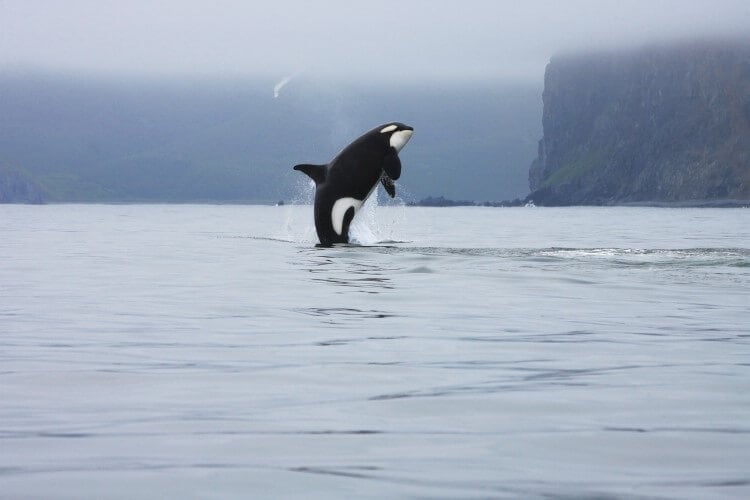
The best places for whale watching in California
California is famous for its beaches and dramatic coastal scenery, which just so happens to make it perfect for whale watching. There are many places in the Golden State where you can see whales, whether that’s by getting out on the water or grabbing some binoculars and keeping a lookout from the shore.
Whale watching in San Diego
San Diego has countless fantastic options for seeing whales. There are plenty of ways to see whales from the shore, particularly during gray whale migration season. The Cabrillo National Monument is one such place. It’s on the southern tip of the Point Lorne Peninsula and commemorates the landing of Juan Rodriguez Cabrillo in 1542. The monument not only offers a glimpse into San Diego’s history, but spectacular views over the Pacific Ocean, and its elevated position makes it perfect for a spot of whale watching. To visit the monument, you will need to purchase a permit from the National Parks website. Permits cost $10 for those on foot and $20 per car.
You can also get fantastic views of the Pacific and any passing whales at Torrey Pine State Reserve, in the La Jolla region of San Diego. The reserve is one of the wildest stretches of coast in San Diego, a remnant of what the landscape was like before the city grew its modern identity, and is a wonderful place to escape the hustle and bustle by immersing yourself in nature. The views of the ocean are magnificent, and over such a wide area, with patience and a good pair of binoculars, you stand a great chance of spotting whales from here.
Seeing whales from the shore is an unforgettable experience. Seeing them from their home, on the ocean itself, can be life-changing. There are lots of whale watching tours operating from San Diego, getting guests out onto the beautiful Pacific Ocean and much closer to the animals. To ensure the safety and comfort of the whales, it’s important to choose an eco-friendly and conscientious operator. If you’d like tips and tricks on choosing the right tour company, we’ve prepared a short guide below.
Whale watching in Monterey
Monterey Bay boasts some of the most abundant marine life in America, thanks to a deep offshore submarine canyon, and it’s this that makes the whale watching in Monterey world-class. Whale watching from the shore is possible in several places in Monterey and humpback whales can often be seen near the coast.
Asilomar State Beach is a fantastic place for whale watching in Monterey. It overlooks the Monterey Bay National Marine Sanctuary, a 276 mile protected underwater area, which is a haven for marine wildlife of all kinds. Visiting the beach is a great day out, not just for whale watching, but to experience one of the finest beaches in California. Asilomar State Beach is accessible for everyone, with beach buggies and wheelchairs being available to hire.
Another beautiful spot for whale watching in Monterey is the magnificent Point Sur Lighthouse. An icon of the Monterey coastline, Point Sur is a designated California State Historic Park, and the lighthouse commands a spectacular view over the Pacific Ocean at an elevated position, making it ideal for whale watching.
You can, of course, take a boat trip out into Monterey Bay itself on the search for whales. Many Monterey whale watching companies claim year-round sightings on a daily basis, and that is certainly possible in this cetacean-rich part of the world.
Whale watching at Newport Beach
Newport Beach is a beautiful coastal region in Orange County on the California coast. Home to a glorious stretch of golden sand and many attractions, it is a popular place for a vacation for families, couples, and groups of friends looking for a good time. It is also a great place for some prime whale-watching opportunities. Unlike previous entries on this list, you don’t have as much chance of seeing whales from the shore at Newport Beach, although it’s always worth keeping an eye out, particularly during migratory season.
For the best chance of seeing some cetacean action, get yourself out on the water. There are several operators offering tours of the area by the sea, or you could embrace paddle power, and rent a kayak. It is quite common for curious whales to come and investigate kayakers in this area, so it’s an environmentally friendly and fun way to do a bit of whale watching at Newport Beach. There is another way to see whales if you’ve got ahead for heights. You can take to the air from Newport Landing, which has partnered with Riter Aviation to run unique whale watching tours from the air. Seeing these enormous creatures from above gives you a great sense of their scale, and gives you a unique perspective of their behaviors and patterns, particularly during the winter migrations.
Whale watching in Los Angeles
As well as being one of California’s top city break destinations, Los Angeles is also a fantastic place for whale watching. There are several ports in and around L.A where you can head out to sea on whale-watching cruises.
You can depart from the famous Long Beach on several whale-watching cruises from Los Angeles. It is quite a long journey through the harbor before you reach open water, but with such beautiful views of the city and the coastline, that’s all part of the experience! You can also head out onto the water from San Pedro, where you will find the Port of Los Angeles, for excellent whale watching.
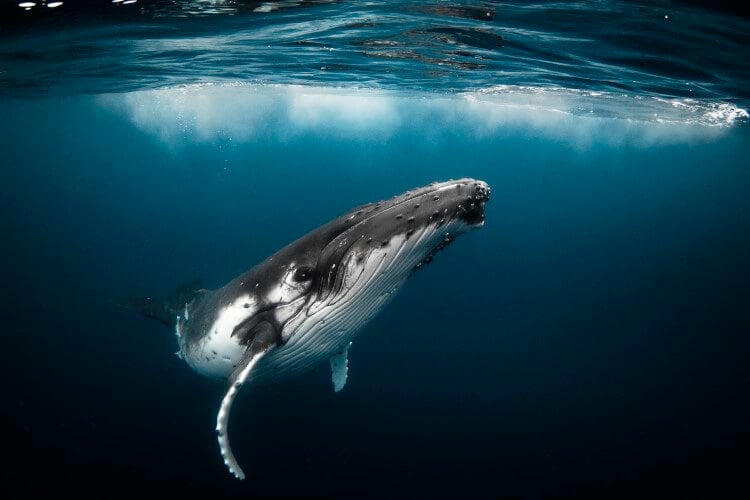
Whale watching in San Fransisco
Twenty-seven miles north of San Fransisco, you’ll find what is possibly the best place in California for seeing whales from dry land. Point Reyes National Seashore is a protected peninsula where, during January, in the thick of the gray whale migration season, as many as 1000 whales pass within a mile of this point every day. Visitor numbers are controlled during peak months, as, not surprisingly, this is a very popular spot for whale watching near San Fransisco. Make sure that you head there early to nab a spot, and then hop on the shuttle service that runs between the car park and prime watching spots. To have the best chance of seeing the most whales, look for a day with calm, flat water, when waterspouts will be easier to see.
You can also take whale-watching cruises out of Pier 39 in the heart of San Francisco itself. Most tours take in the coasts around the city, but some head a little further out – 27 miles to be exact, to the wild and wonderful Farallon Islands. This tiny rocky outcrop in the Pacific is a wildlife haven and attracts all kinds of animals, including krill, the favorite snack of many baleen whales. From summer through fall, blue whales and humpback whales regularly hang out around the islands, slurping up the tiny organisms that live there.
Whale watching in Santa Barbara
The Santa Barbara Channel is home to nutrient-rich Pacific water, which in turn attracts abundant wildlife, including plenty of whales. Grey whales travel through the channel, passing close to the shore. Therefore, you stand a good chance of seeing them on a walk along any of the beautifully scenic bluffs just outside of the city.
You can also board one of the many catamarans and small boat tours leaving Santa Barbara every day throughout the year. Even if you visit outside of peak whale watching time, you are very likely to see dolphins, sea lions, and other marine life on your tour, thanks to the sheer number of species that the channel attracts.
Whale watching in Santa Cruz
Just like nearby Monterey Bay, Santa Cruz is prime whale-watching territory, thanks to the deep underwater canyon attracting all the tasty things that whales like to eat. Santa Cruz is a vacation destination that is built on a love for the sea and everything in it. Therefore, it’s no surprise that there are plenty of opportunities to join the whales in their natural habitat. Cruises from the shore depart daily, and when the waters are calm, you can hop into a kayak and paddle your way out to see if any of Santa Cruz’s marine inhabitants will join you for the ride.
Moss Landing whale watching
Moss Landing is a popular starting point for whale watching in Monterey County because it is the closest point to the submarine canyon that dominates the underwater landscape just offshore. The canyon is the reason that the whale watching in the area is so good, so being able to get there in next to no time at all is a huge plus point if you want the best cruising to whale watching ratio.
Whale watching in Ventura
Ventura is a magical place for whale watching. The teaming waters off of the coast hold many surprises. Whether it’s the magnificent blue whale, migrating gray whales with young calves, or playful dolphins soaring through the crests of frothing waves, it’s highly likely that there will be a cetacean welcoming committee ready to meet you when you take to the water. There are many companies offering whale watching tours from Ventura to the nearby Channel Islands, where you can see all manner of whales and other marine life all year round.
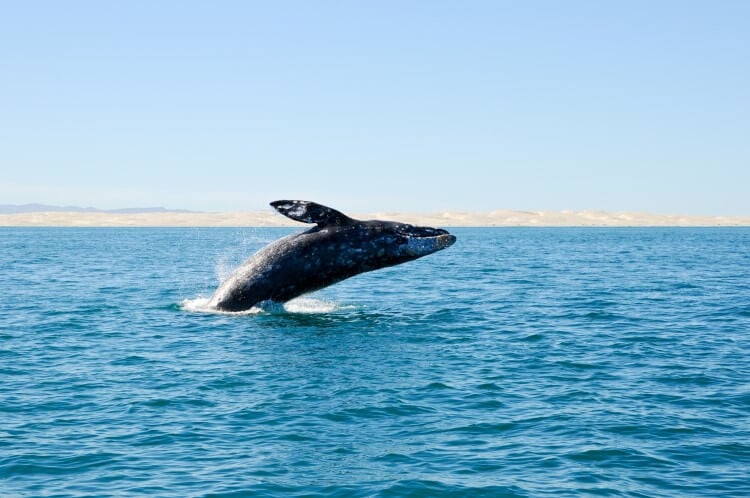
How to choose responsible whale watching tour agencies in California
Whale watching is a wonderful way to see these beautiful creatures in the wild. It is an incredible privilege to share an insight into their world. Finding an ethical company that heeds sustainability practices ensures that animals are protected for generations to come. But how do you find a whale watching tour company that you can be sure is following ethical practices?
Sadly, not all companies put the animals at the heart of their business. However, there are ways to spot genuinely conscientious operators. Instead of going with companies that advertise getting as close as possible to whales, look instead for operators that pride themselves on giving the animals space. Whales are large animals and need plenty of space without being crowded out by boats full of visitors, however well-intentioned those visitors are. Good companies will also happily advertise the rules and regulations they follow.
Another thing to look for is companies that have naturalists as part of their staff. Ensuring that excursions are educational as well as spectacular has countless benefits for both the animals and the guests. If in doubt, ask! Reputable companies will be more than happy to talk you through how they protect and cherish whales and their environment.
Here are some of our favorite eco-conscious whale-watching tour companies in California;
- Monterey Bay Whale Watching with Sanctuary Cruises
- Eco Tour – San Diego Attractions | Ocean Connectors
- FAQs | Book a Dolphin and Whale Watching Tour with Capt Dave
- Whale Watching Tours, Cruises | Los Angeles, Long Beach, CA
- San Diego Whale Watching Tours – Oceanic Eco Tours
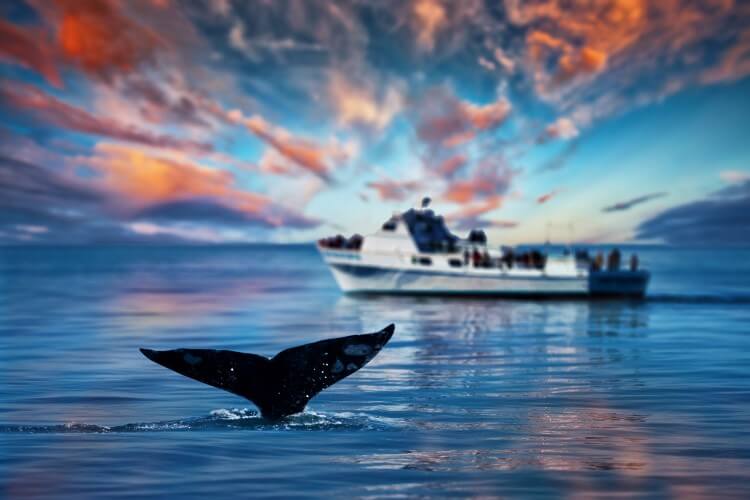
Book a spectacular California vacation rental with Top Villas.
Find yourself a beautiful vacation home in California for an unforgettable vacation in the Golden State. From charming beachfront condos in San Diego to chic mansions in Beverly Hills, there are so many wonderful options to choose from. Many of our villas come with awesome features. Private pools, home gyms, and game rooms are all available, plus the option to add luxurious Travel Extras. Visit our California Villa page here.

